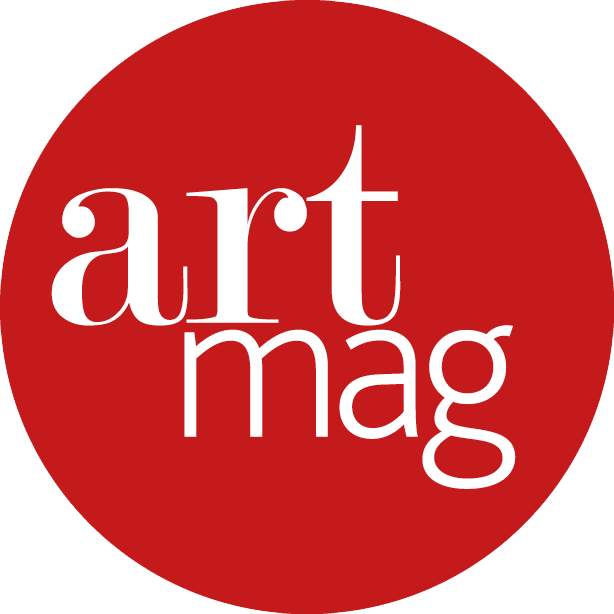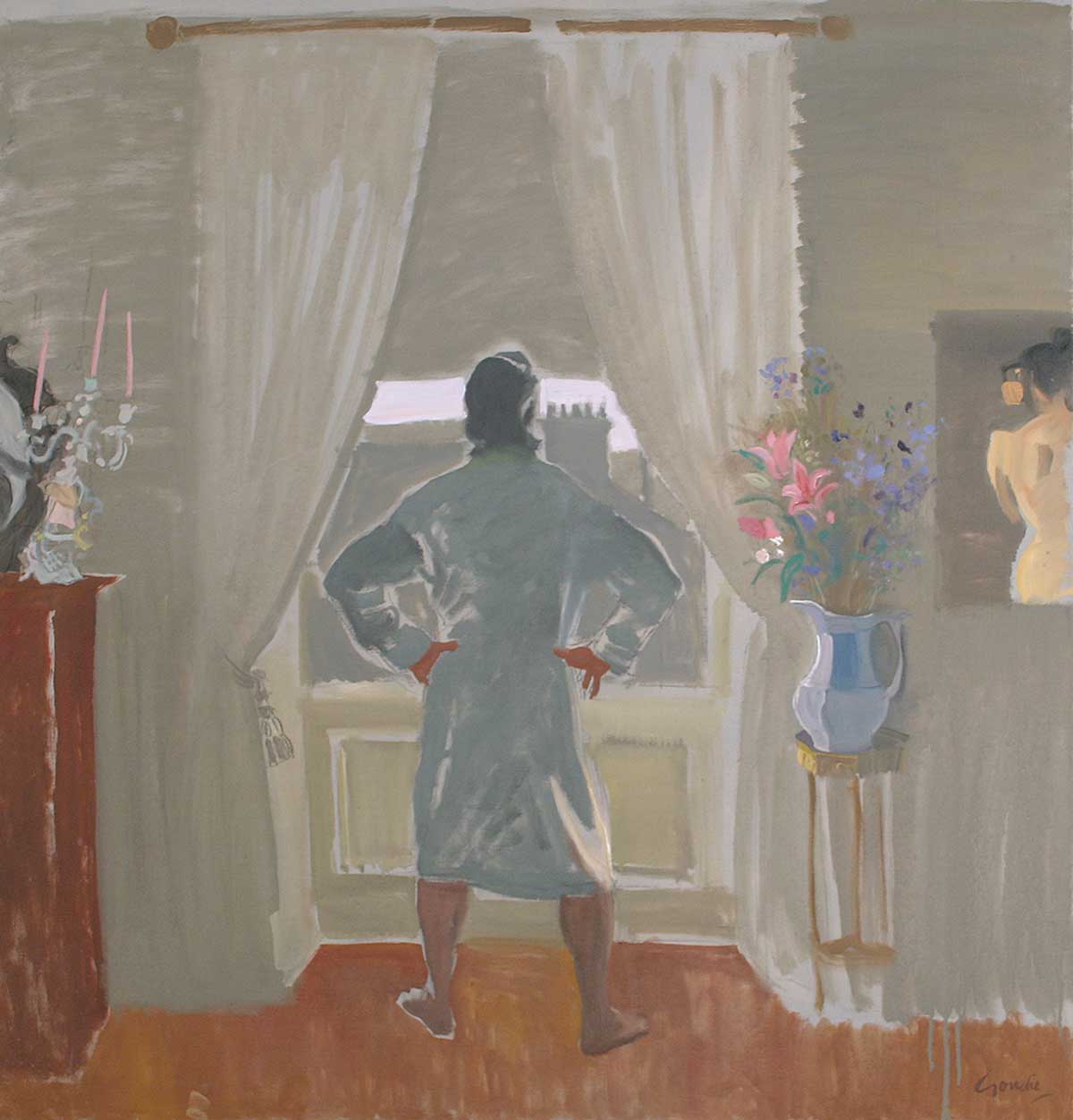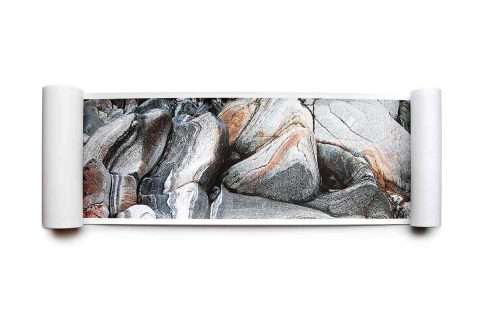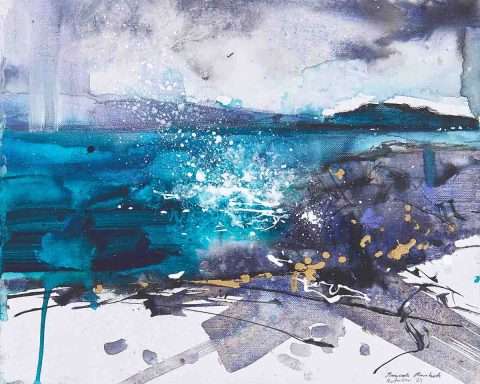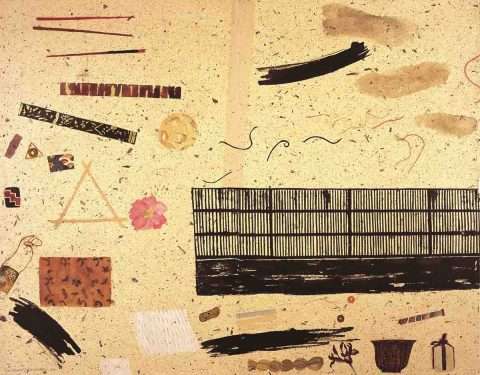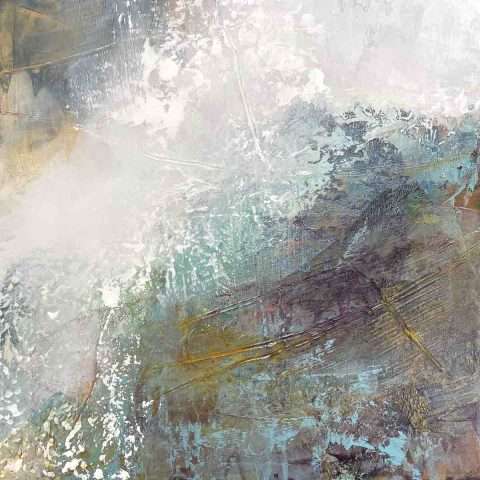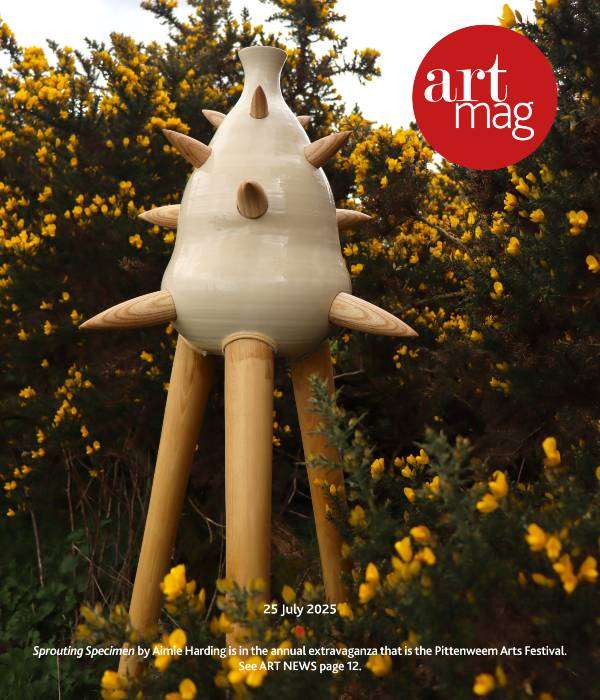‘I have always lived through my art, to really taste life to the full-.. everything which excited my imagination had to be set down in pictorial terms, a magic world where a different language helps explore the experience of living’ – Alexander Goudie.
‘(My father) was an unreconstructed romantic, an artist… dedicated to painterly flamboyance, an eye and a hand that documented his most valued experiences with unrivalled skill.’ – Lachlan Goudie
The Scottish Gallery first promoted the magical, painterly vision of Alexander Goudie in 1966 with regular themed exhibitions throughout his lifetime (1933-2004), and a retrospective in 2021, An Artist’s Life, Act 1 is now followed by La Belle Vie Act II.
Aged just 16, Alexander Goudie began his studies at Glasgow School of Art, where he was renowned as ‘a bit of a rock star’, before graduating with several awards and a travel scholarship. Touring France and Spain in the 1950s, the work of Picasso, Manet, Courbet and Velázquez influenced his versatile, theatrical style, from portraiture to narrative painting and landscapes.
Goudie saw his art as a way to tell stories, focusing on scenes of everyday life at home and away. In 1962, he married a French girl, Marie-Renée Dorval, whose parents owned Villa Ker Jan in the fishing village of Loctudy, Brittany. This became their summer Celtic retreat, where he sketched local people, fishermen and coastal views. Strong light, shadows and colours around Pont-Aven, Brittany had also exerted a transformative influence for Gauguin and Sérusier, who formed an artistic community here.
Through the quirky, curved perspective of Loctudy, Open Sky, with a vivid palette – teal-tinted water and mauve-streaked sky – sweeping, gestural brushstrokes evoke an atmospheric mood and lively movement. The low horizon line and billowing clouds, add to the sense of isolation and grandeur, which is rooted in tradition yet distinctly modern, through Goudie’s Scottish Impressionistic imagination.

‘I found myself an adopted son of a land strategic in the evolution of modern art, a secret garden where nature conspires in an endless drama! – a mighty ocean and a vast sky’. – Alexander Goudie
In a chalk drawing, The Harbour through the windows, the apparent flourish of loose lines and mark-making are intentional and well-considered. The viewer looks out of the window which frames the composition into grid-like panels, defining architectural structure. This gives a layered depth across the balcony, plants and railings to the background scene of fishing boat, ripple of waves and distant rocks; while monochromatic, the smudged chalk gives tone and texture to capture an emotional response, rather than a literal depiction.

The dazzling glow of French summer heat in Au Soleil showcases Goudie’s detailed draughtsmanship and masterly technique; the deceptively simple sketch is based on bold contouring of elongated limbs, selective colouration for the yellow swimsuit and red toenails with an unusual overhead perspective. With a hint of Egon Schiele’s economy of line, the surrounding empty white space evokes sunlight as well as lending sculptural shape to the marble-like figure, in a spontaneous ‘snapshot’ moment.

Translated into English, a large platter of red mullet is the fishy feast in Fresh Catch of Rougets – with a reddish-coral colour, the sweet, flaky flesh is reminiscent of crab and lobster. Arranged in a slightly chaotic, overlapping manner, head to tail, the fluid wash of watercolour depicts the sleek curves and flatness with remarkable economy. A shaft of sunshine seems to enhance the glossy translucency of their skin and the brightness of their black beady eyes.

For over thirty years, Alexander Goudie, ‘le peintre Écossais,’ distilled his passion for Brittany in paint, as a love letter to his wife Maïnée who had introduced him to its ‘endless drama’.
At home in his Glasgow studio, she was his model and muse, such as in the beautiful portrait Maïnée in a Blue Dress, dramatically posed in a cerulean silk gown against ambient shadows. Evoking a mood of calm composure, she sits at a slight angle in the curved antique chair, gazing towards the light with a soft smile in quiet introspection. The classical elegance is reminiscent of Lady Agnew of Lochaw by John Singer Sargent, blended with the figurative vitality of Velázquez.
‘To be the wife, companion and muse of an artist is a privilege. You become part of a world of creativity, the silent observer.’ – Maïnée (Marie-Renée Dorval)

As we peer Into the Living Room from the hallway through the ornately-carved wood door frame, like a proscenium arch, the decorative style is akin to a stage set. The domestic scene of armchairs, velvet sofa, lamp and Persian rug guide the eye towards the curtained window with balanced spatial harmony. Soft pastel shades, peach, mint-green and amber invoke warmth and texture in this intimate setting; Goudie designed the family home, Arnewood House, like a living still-life with his exuberant aesthetic sensibility.
‘Entering Sandy’s carefully curated world was for me the discovery of a new reality, formed by taste, sensuality, visual intelligence and talent. For Sandy, life itself was a work of art.’ – James Knox (Fleming-Wyfold Collection)

Goudie described his beloved Glasgow as the Vienna of the North – a city of cultural and artistic heritage. With echoes of the Breton harbour scene above, in Good Morning Glasgow, the artist stands at the window admiring the urban view across chimney pots of Victorian architecture under a bright sky. Barefoot in a dressing gown, hands on hips, the pose radiates a feeling of contemplation, eager to face the day. The flowers, candelabra and nude painting are all part of the narrative, both personal and cinematic. Composed with cool clarity, we can observe a quiet moment of reflection in this charismatic Rückenfigur self-portrait.

With such an emotional connection to place, in Scotland and France, Alexander Goudie’s creativity was expressed through his vivacious visual language, ‘the pictures should tell their own story… with a clear voice’. This illuminating exhibition of sketches, paintings and archive materials highlights, with humanity and humour, the romantic spirit and joie de vivre of his flamboyant personality.

An illustrated catalogue features a charming biographical essay by Alexander’s son, Lachlan Goudie. An accomplished painter and broadcaster in his own right, Lachlan will be discussing the legacy and enduring influence of his father at a special live online conversation on Thursday 17th July at 6–6:30pm.
With thanks Vivien Devlin for this review.
